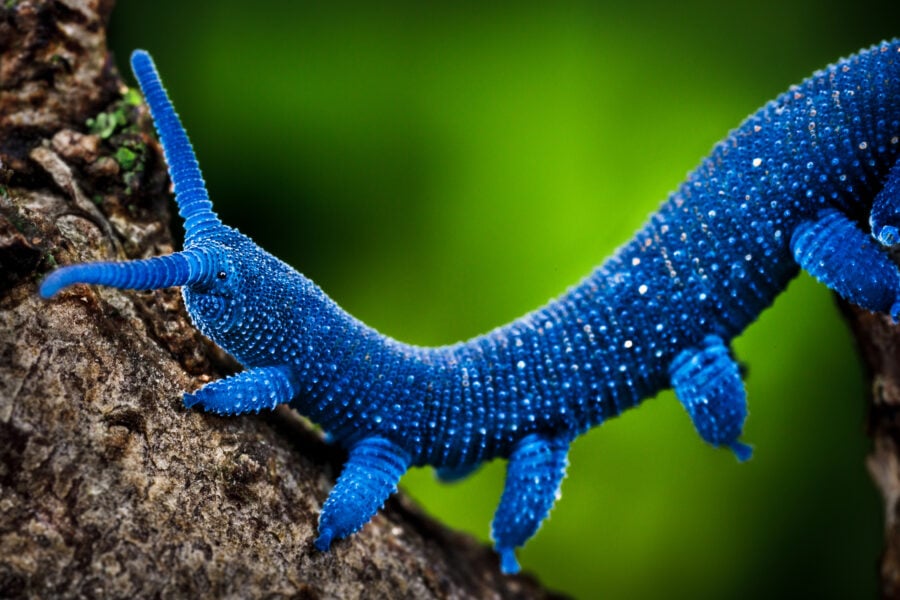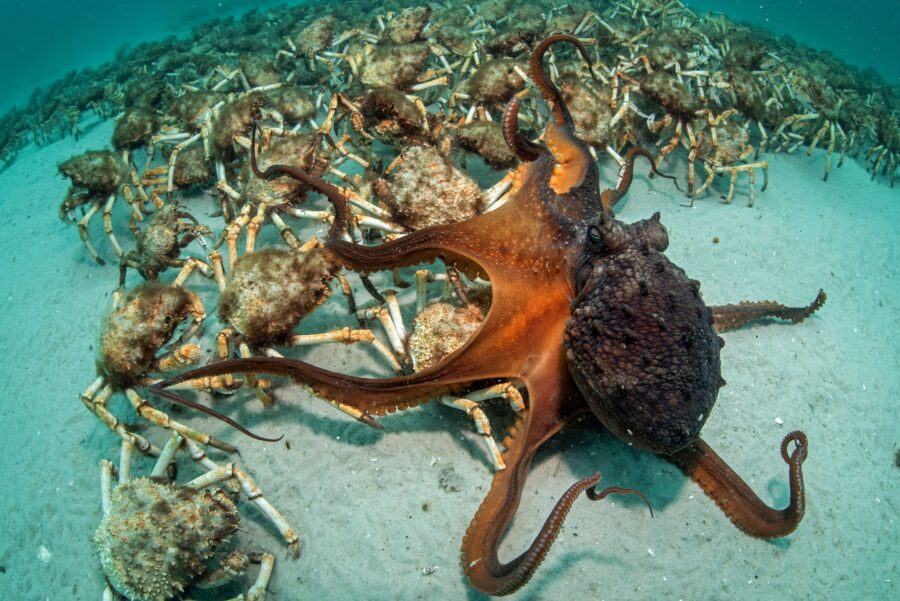Velvet worm slime could be a new bioplastics source

A mucous-like substance from bizarre creatures known as velvet worms is being investigated as a novel source of materials with plastic-like potential.
With short, stumpy legs and bodies covered in overlapping, water-repellent scales called papillae, velvet worms are among Australia’s strangest critters. These caterpillar-like animals are so unusual they’re classified in their own a phylum: Onychophora.
Australia is home to the world’s largest diversity of velvet worms, with more than 74 species so far described.
The group is found across the South Hemisphere in countries that were once connected as part of Gondwanaland, including South Africa, Chile, New Zealand and New Guinea.
Australia’s velvet homes
Velvet worms live in temperate forests across Australia’s south-east, dwelling in moist places such as rotting logs and leaf litter.
They are voracious little carnivores that subdue small invertebrates (such as termites, spiders and centipedes) by squirting them with a net of sticky slime excreted from glands on its head. This slime hardens mid-air into stiff fibres that are as durable as nylon.

With its prey ensnared, the velvet worm then bites into its skin and sucks out nutritious fluids.
This unique hunting strategy (and defence mechanism) might be key to their long-term success; velvet worms are living fossils that have existed for upwards of 500 million years.
Now, scientists from McGill University in Canada and Nanyang Technological University in Singapore are studying the protein structures within the slime in a bid to pinpoint the mechanism behind its ability to rapidly transform from liquid to fibres (and back again).
“Nature has already figured out a way to make materials that are both strong and recyclable,” said Associate Professor Matthew Harrington, from McGill University’s Department of Chemistry in Canada. “By decoding the molecular structure of velvet worm slime, we’re now one step closer to replicating that efficiency for the materials we use every day.”
A natural solution
The research, published in the journal PNAS, described the slime as a “protein-based bioadhesive” that has potential to “contribute to the development of sustainable bioinspired materials”.
Most plastics and synthetic fibres, such as nylon, are made with petroleum-based materials. Manufacturing and recycling them are usually energy-intensive processes that often require heat or chemical treatments.
In contrast, velvet worms create strong, durable fibres from simple pulling and stretching mechanisms. Better yet, these fibres dissolve if they come into contact with water.
It’s a no-brainer in terms of its potential for next-generation bioplastics – although researchers have yet to identify what the best application of this would be.
“Obviously, a plastic bottle that dissolves in water would have limited use, but by adjusting the chemistry of this binding mechanism, we can get around this issue,” Prof Harrington said.





